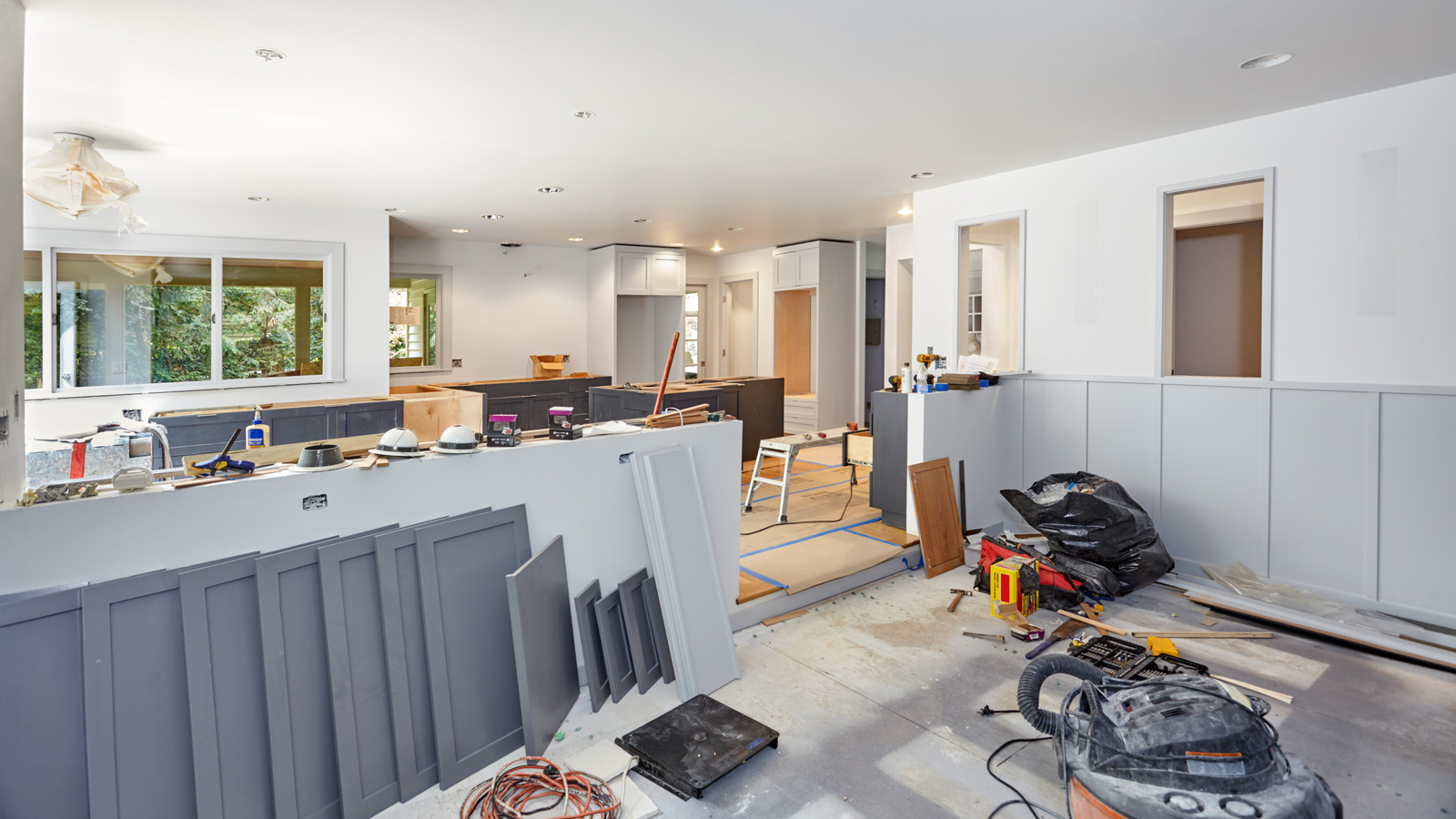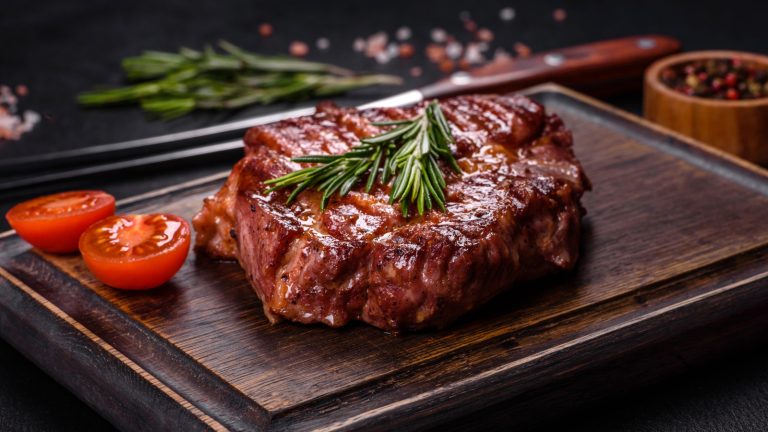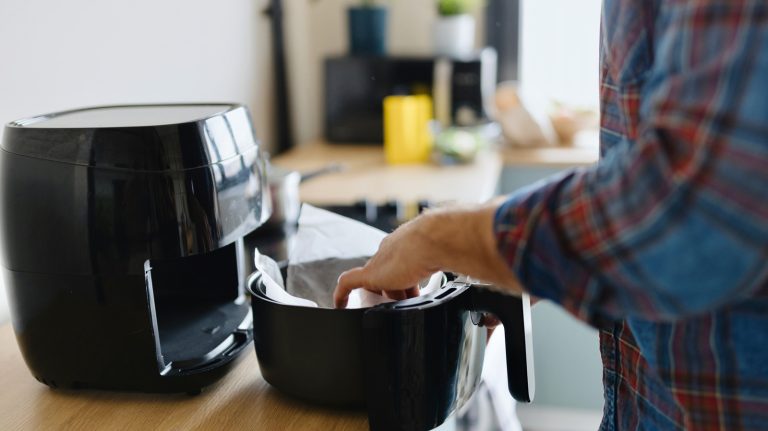We may receive a commission on purchases made from links.
Have you been noticing more and more signs that it’s time to remodel your kitchen? Have your appliances seen better days, or are your old laminate counters peeling? Do you need a better layout or a bigger island to give you more food prep space? If you answered “yes,” to any of these questions and are ready to get started on planning and installing a kitchen that better matches your needs and design preferences, you’re probably feeling both excited and overwhelmed. While getting a new kitchen can help modernize your space and solve many problems, there is a lot to plan for, and you don’t want to end up making a mistake that you’ll regret.
To help you learn more about some of the things you should avoid doing when renovating your kitchen — and what you should do instead — we reached out to four home remodeling and design experts. Danny Niemela is a professional contractor, home remodeler, and the co-owner, Vice President, and CFO at ArDan Construction; Ariel Darmoni is the General Manager at 123 Remodeling; Cathleen Gruver is the Lead Interior Designer with Gruver Cooley, and Sharon Sherman is the Founder of Thyme and Place Design. Ahead, we’ll share some of their exclusive tips to help you achieve a kitchen that matches your design and functionality needs.
Choosing major components in the wrong order
There are a lot of major decisions you need to make when designing a kitchen, including the cabinets, countertops, appliances, flooring, backsplash, and wall color. One thing you want to be careful to avoid is not selecting these different components in the correct order. “Start with appliances. Always! The dimensions, venting, electrical needs and gas requirements will shape the whole layout,” says Danny Niemela. Sharon Sherman also stresses the importance of selecting appliances first. When speaking about working with some of her clients, she shares, “If they desire a pro style range or a wall oven and cooktop the overall layout will change.”
Once you’ve selected the appliances, you can move on to the next major decision, which most of our experts agree should be the cabinets. These will consume the bulk of the space in the kitchen and should be front of mind as you’re selecting other finishes, which is why our designs recommend choosing them next. After finalizing your appliance and cabinet selections, Danny Niemela says, “Countertops come after cabinets, then flooring, then backsplash and paint. If you get the order wrong, you will back yourself into a corner fast. We have seen people choose a fridge too late and lose an entire pantry.” That would be a major refrigerator-buying mistake that you certainly don’t want to make.
Failing to plan for proper lighting
“Lighting is one of the most overlooked, yet most important, elements in a kitchen,” says Cathleen Gruver. Many of us assume that we only need one central light in a kitchen. If that’s all that you’ve ever had, then you may not know better. However, our design experts recommend taking a more layered approach to ensure you get the most out of the space — both in terms of being able to work and prepare meals, but also in ensuring it is a warm and welcoming environment for entertaining or just relaxing after a long day at work.
Danny Niemela explains, “You need layers: ambient lighting from ceiling cans or flush mounts, task lighting under cabinets or over prep zones, and accent lighting if you are going for mood.” Task lighting is one area you don’t want to skimp on when you’re planning out your space. This type of lighting, which typically goes beneath the cabinets, helps illuminate countertop workspaces. As Sharon Sherman reminds us, “Cutting, chopping and other meal preparation usually involves sharp knives, so seeing what you are doing is a safety factor. This light also allows you to see if food is spoiled or in need of a second rinse.”
Overlooking storage space
Don’t make a pantry storage mistake before you even have a pantry planned out for your space. “I see so many people prioritize aesthetics over function. Floating shelves might look beautiful, but if your pantry is bursting at the seams, they’re probably not solving your real storage needs,” says Cathleen Gruver. Instead, make sure to consider your needs as you weigh your design vision with the functionality that is necessary to make your kitchen work for you.
Ariel Darmoni highlights some key things to consider as you decide on your storage needs. “Think about how you cook and what you use every day. Plan for deep drawers, pull-outs, vertical dividers, and tall pantry cabinets. Storage works best when it’s customized to your lifestyle, not just based on standard measurements,” he says. If you are someone who has a large family or regularly entertains and cooks for a crowd, your cookware storage needs will likely be very different from someone who lives with only one other person or prefers to cook very basic meals.
Forgetting about electrical outlet and potential new circuits
It’s easy to get so caught up in the design process that you neglect to consider function. However, doing so is something you’ll want to be careful to avoid, as it can lead to serious frustrations down the line. One feature that every kitchen will need in order to function properly is electricity. You don’t want cords running across your countertops every time you need to use the toaster or blender. Plugging these small appliances into an extension cord generally isn’t considered safe, so without thought-out outlet placement, your space isn’t likely to work for you.
Danny Niemela says, “Map out where you will use devices (e.g. coffee machines, mixers, phone chargers). Plan for at least 6 to 10 outlets in a standard kitchen.” If you’re installing a kitchen island and want to have power run to it, he recommends planning that early to make sure the wiring can be run properly before too much construction is complete. While important for functionality, wall outlets in a kitchen may detract from your overall design. Cathleen Gruver offers a solution. She says, “If you’re investing in a beautiful backsplash, you can even use a product like a Legrand under-cabinet system to keep outlets out of sight without sacrificing function.”
In addition to the outlets for your smaller appliances, don’t forget about the electrical needs of the refrigerator, range, dishwasher, and/or wall ovens. “New appliances may also require more power than older ones, so planning circuits in advance helps avoid delays and extra costs during construction.” If you’re not certain whether you have dedicated circuits (or need them), consult with an electrician.
Failing to add proper ventilation
“Ventilation is one of the most important elements to get right in a kitchen renovation,” explains Ariel Darmoni. He continues, “It removes smoke, steam, grease, and odors that can otherwise build up and settle into your cabinets, walls, and upholstery.” Beyond the unpleasant odors that could linger in your space, Darmoni explains that this build-up could also cause more serious problems in the future, such as mold growth or warped or damaged cabinets.
Moreover, the range hood for your gas stove plays a bigger role than you may expect. It does more than simply remove odors. As Cathleen Gruver explains, “If you cook with gas, a good hood helps reduce the amount of gas you’re breathing in.” Gas stoves can release small amounts of carbon monoxide into the air, so running the fan (or even opening a window) can help it dissipate.
As you start looking for a range hood, you’ll notice that there are several options, each with varying CFM (cubic feet per minute) ratings. “Go for a hood with at least 400 CFM if you cook regularly. We once upgraded a client’s range hood and reduced lingering smells by 80%. It matters more than people realize,” says Danny Niemela.
Forgetting to consider workflow
One of the most common kitchen design mistakes that you’ll want to avoid is failing to consider workflow. If you can’t effectively use the space how you need to — to prepare meals, put dishes away, entertain, and complete various other tasks, you’re going to experience major regrets once the renovation is complete. “Good workflow makes cooking easier and reduces stress during busy mealtimes. It also allows multiple people to use the kitchen without getting in each other’s way,” explains Ariel Darmoni.
So how should you lay out your kitchen to enhance workflow? Unfortunately, there is no cut and dry answer to this question. It will depend on several factors, including the size and shape of your kitchen. Plus, as Cathleen Gruver points out, “Every household operates differently, so your kitchen should support your specific workflow.” Gruver recommends considering your food prep, cooking, serving, and cleaning preferences and routines. Think about whether added features, such as a smaller prep sink, could make the space more functional for you.
Choosing the wrong countertop material
One key component of any kitchen renovation is the countertops. You want to strike the right balance between quality, functionality, and style. Ariel Darmoni cautions against choosing a very low-quality material, such as laminate. Darmoni says, “They tend to warp and peel over time.” You don’t want a cheap countertop to take away from the overall aesthetics of your kitchen after just a few years.
If you want a high-end look, you might think that marble countertops are the way to go. However, Sharon Sherman explains, “Marble is generally a high maintenance material for a kitchen counter.” She recommends opting for quartzite or granite instead. These materials are easier to take care of and more forgiving than marble — plus you can find patterns that mimic the veining look of marble if that’s important to you. Regardless of the countertop material you choose, be sure to learn how to properly maintain it. Natural stone countertops will need to be resealed every few years to protect them against staining and water absorption.
Skimping on cabinetry
The cabinets are another huge component of any kitchen renovation. In fact, Cathleen Gruver even refers to them as “the backbone of your kitchen,” and notes that “choosing well-constructed ones pays off over time.” She recommends prioritizing your budget to make it possible to opt for high-quality cabinets. Sharon Sherman agrees that it is important to avoid choosing low-quality cabinets. “There is nothing worse than a few years after completing a renovation in an expensive project like a kitchen, that the cabinets start to look worn, and the installation looks less than stellar.”
So, what should you look for when choosing cabinets for your kitchen? “I always tell clients to look for cabinets with dovetail joints, plywood construction instead of particleboard, and soft-close hardware for drawers and doors—those are signs you’re investing in something that will last,” says Gruver.
Installing the various components in the wrong order
Just as there is a right and wrong order to select the appliances, countertops, cabinets, and flooring for your kitchen, there is also a right and wrong order in which to install these components. You’ll want to avoid installing them in the wrong order. Ariel Darmoni explains, “If you jump ahead or go out of order, you risk damaging finished elements or throwing off measurements. It creates headaches you can avoid with proper planning.”
According to Danny Niemela, the first major component that should be installed for any kitchen renovation project is the flooring. “It gives you a cleaner, continuous look and flexibility for future layout changes. Floating floors like LVP or engineered wood need space to expand. Cutting them around base cabinets is a pain and usually leads to warping,” he shares. After the flooring is in, Darmoni explains that you can move on to the cabinets next. Finally, install the countertops and the backsplash.
Opting for a paint finish that you’ll end up regretting
While some of the walls in your kitchen will likely be covered with the backsplash, there will still be other sections that need to be painted. A lot of focus goes on choosing the best color to coordinate with the undertones of the cabinets or the different flecks or marbling on the countertop material. And, while this is important, it is also essential to avoid overlooking the actual finish of the paint. “Skip flat or matte wall paint in kitchens. It absorbs grease and does not clean well,” says Danny Niemela.
Instead, opt for something that will be easier to clean in the (likely) event that food splatters onto the wall as you’re cooking. “A satin or semi-gloss finish works much better because it resists moisture and can be wiped down easily. You want your paint to look good and perform well under everyday conditions” explains Ariel Darmoni.
Prioritizing style over function
With so many stylish and colorful kitchen ideas, it is easy to want to focus your attention on making your space look like it came out of a design magazine. However, while style and appearance should certainly be considered as you plan for your kitchen renovation, Ariel Darmoni cautions against over-prioritizing looks while neglecting the functionality of the space.
He says, “It is easy to get caught up in the look of a dramatic backsplash or a statement island, but if those choices make it harder to move around or reduce your storage space, they quickly become frustrating. A beautiful kitchen still has to work well every day.” You can still walk away with a gorgeous kitchen, but you want your initial focus to be mostly on layout, storage solutions, lighting that will allow you to see what you’re doing, and other functionality-related decisions.
Making last-minute changes once the renovation has started
It is crucial to devote a lot of thought into the planning process for your kitchen renovation. Talk through different layouts with your designer or contractor, ask questions, and get their thoughts on potential downsides of your decisions or other things they would recommend. The best time to make any changes to your design is when you are still in the planning process. If you make last-minute changes once work has already started (or even once materials have been ordered), it can cause all sorts of problems. “Making changes mid-project can be incredibly costly and create a domino effect. For example, switching out cabinets late in the game can throw off your entire schedule due to long lead times,” explains Cathleen Gruver.
Your finished product and timeline isn’t the only thing that can suffer when last-minute changes are made. “One change could mean ordering new materials, adjusting plumbing, or delaying other installations. These changes usually increase time and cost,” says Darmoni. Your decisions could make more work for the crew installing your finishes — and could cause another homeowner to have to wait to have their project started. Your project costs could also increase — and not only if you end up choosing more expensive materials than you initially decided on. “We charge a percent change order fee to cover the chaos. That is not about money. It is about protecting momentum and crew coordination,” says Niemela.
Failing to build in time for delays
Even when you have a well-thought-out plan and don’t throw any last minute curve balls to your designer or contractor, there are no guarantees that the estimated project completion timeline is set in stone. Avoid scheduling a housewarming party or other major event shortly after the kitchen is supposed to be complete. “Materials get backordered, crews hit hiccups, life happens,” says Danny Niemela.
If you go into the renovation understanding that the estimated finish date is truly an estimate, you’ll be able to accept these changes much more easily. Hold off on scheduling that housewarming project until the kitchen is complete — your friends and family can wait a few additional days to check it out. As Niemela says, “Renovating a kitchen is intense, but if you do it right, it transforms how you live every day.” In the grand scheme of things, a few additional days — or even a few extra weeks — won’t matter when you’re left with such a beautiful and functional space.
Ignoring your lifestyle and priorities
Every household utilizes their kitchen in unique ways. For this reason, Ariel Darmoni and Danny Niemela both share that it would be a mistake to ignore your lifestyle and priorities as you plan the new space. “Avoid copying someone else’s kitchen just because it is trending. We have had clients show up with 30 Pinterest screenshots and zero clarity,” says Niemela. Just because a kitchen is attractive (and even functional for someone else), it doesn’t mean that it will deliver for you and your household.
Instead, Darmoni says, “Focus on how the space will support your habits, and make sure your choices are practical for the long term. A kitchen that works for you will always feel like the right investment.” To prioritize your lifestyle, think about how you want to use the space. If you see yourself entertaining in the kitchen, for example, then a large kitchen island, bar seating, or even a wine fridge may be a worthwhile addition. Avid bakers, on the other hand, may want to incorporate a double oven into their design.





